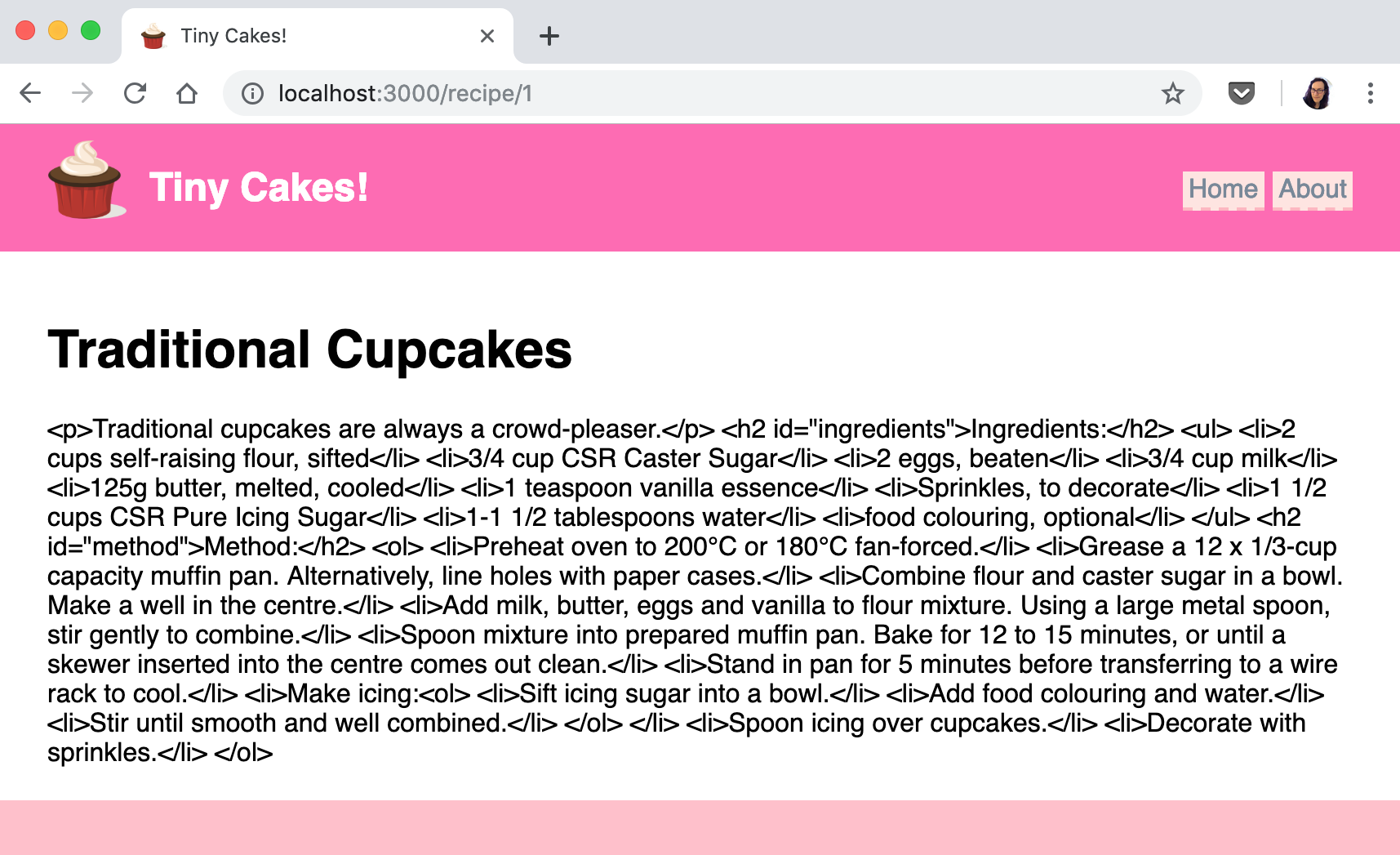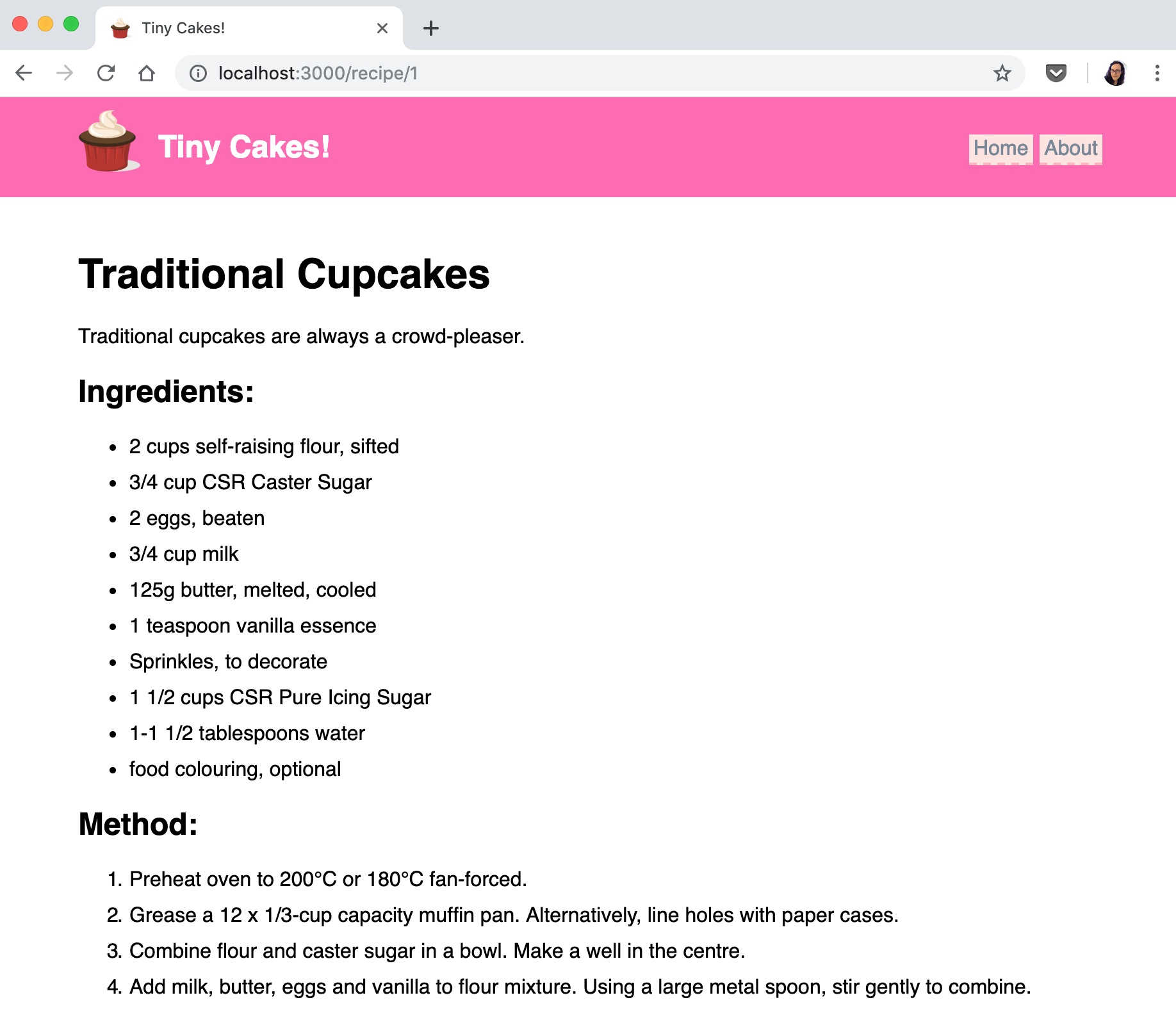Workshop Steps
- 0 - Installing Node.js
- 1 - Project setup
- 2 - Install Express
- 3 - Create Server
- 4 - Static Assets
- 5 - Creating Routes
- 6 - Templates
- 7 - Partials
- 8 - Adding the Recipe Page
- 9 - Adding a Database
- 10 - Adding the Recipe Page
- 11 - Adding Admin features
- 12 - Editing a Recipe
- 13 - Working with Markdown
- 14 - Adding a new recipe
- 15 - Delete Recipes
- 16 - And now what?
Useful Links
Step 13 - Working with Markdown
So we have a problem with the displaying of the content of our recipes. We are just displaying that content as raw text, not as HTML. How do we change raw text like this into HTML?
Well the content that we have is actually written in a special syntax called Markdown which is designed to make this easy.
Markdown is a very simple markup language designed to be easy to read and easy to convert to HTML. Markdown is very popular and you will encounter it frequently as a developer. This whole workshop is actually written in markdown as is a lot of other documentation.
There are also many, many tools and packages for processing Markdown content. The one we are going to use is called Marked.
So first lets install the marked package using npm just like the previous packages we have installed:
npm install marked --save
Then import marked into server.js at the top:
var marked = require('marked');
marked is just a function which returns the HTML version of the text it is passed. So we’ll update our recipes route so instead of passing the recipe we got from the database to our template, we will make a new recipe object based on that one but with content converted by marked. Then we’ll pass that to the template.
Update the /recipe/:id route like this:
server.get('/recipe/:id', function(request, response) {
var recipe = getRecipe(request.params.id);
var newRecipe = {
id: recipe.id,
name: recipe.name,
content: marked(recipe.content)
};
response.render('pages/recipe', { recipe: newRecipe });
});
Restart our server and lets check what it looks like now:

Opps, not quite right yet. What happened then?
Well the <%= %> output tag actually returns what is called escaped HTML.
Escaping characters means converting them to special sequences of characters which will not get interpretted as HTML. This is very important when you have characters like < and > in the content you want to output but you don’t want the browser to think you are trying to use HTML tags that don’t exist. That can get strange.
But in this case we want the output to be interpreted as HTML because we have already converted it from markdown to HTML and we know it’s ok.
So let’s use a different output tag, <%- %>, the unescaped output tag.
Lets update our recipe.ejs to replace the <body> as below so we are displaying recipe.content as unescaped HTML:
<body>
<% include ../partials/header %>
<div class="container">
<h1><%= recipe.name %></h1>
<div><%- recipe.content %></div>
</div>
</body>
Refresh the recipe page and it will look much nicer now:

 Muses Code
Muses Code